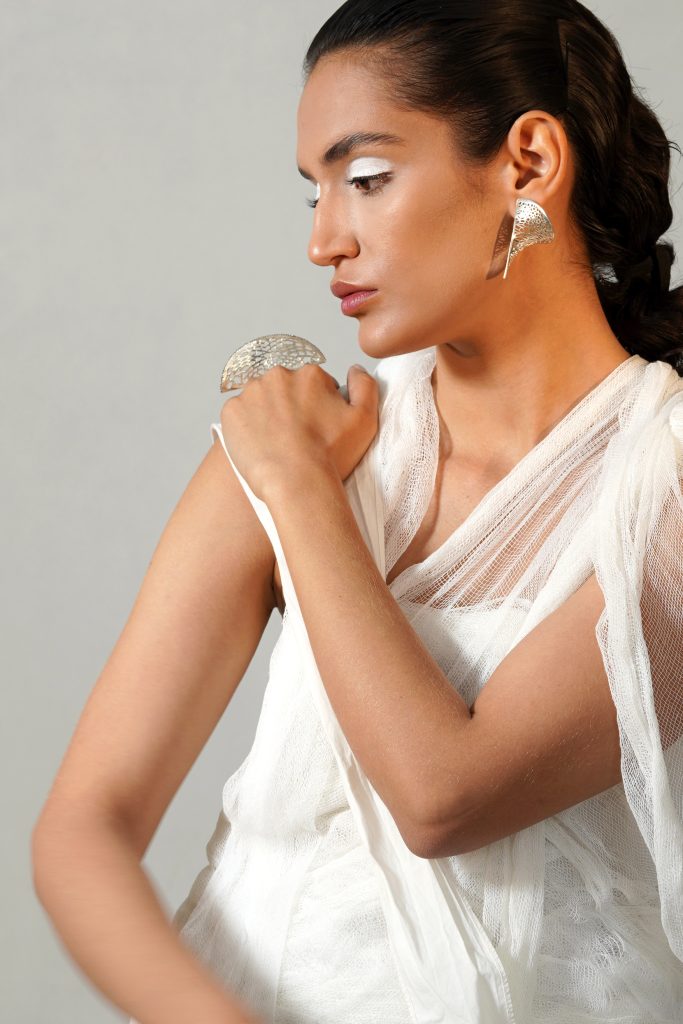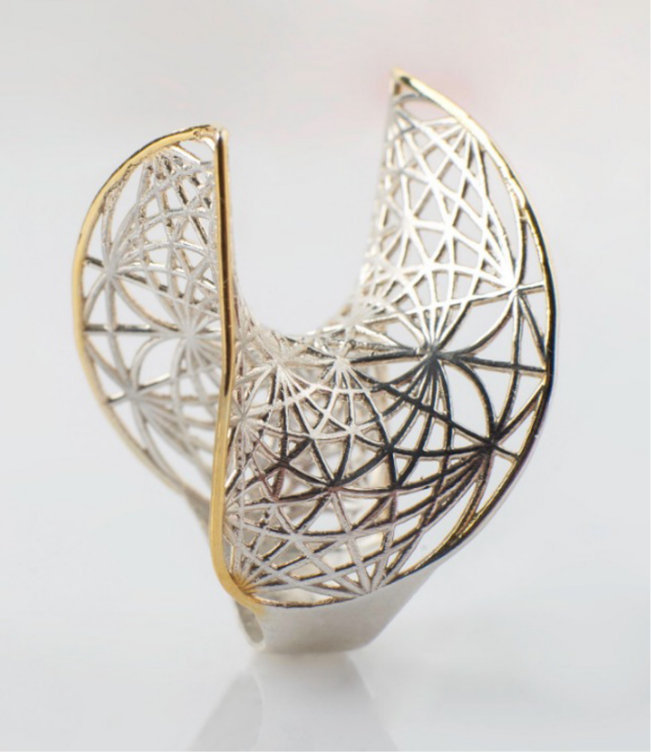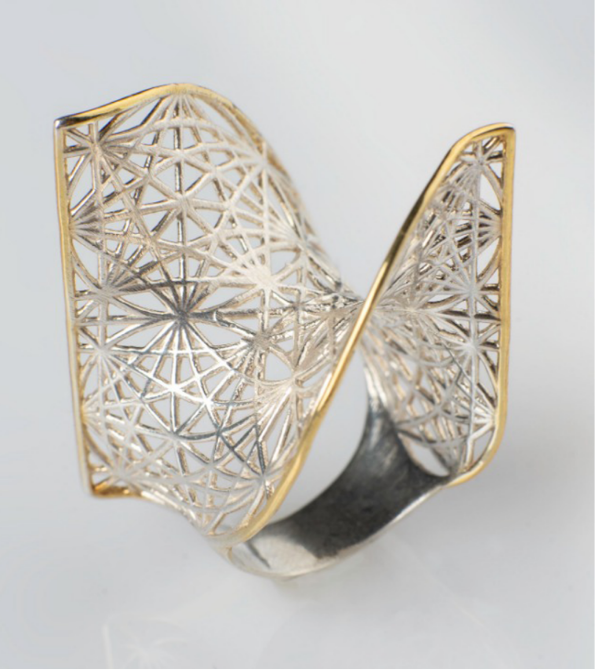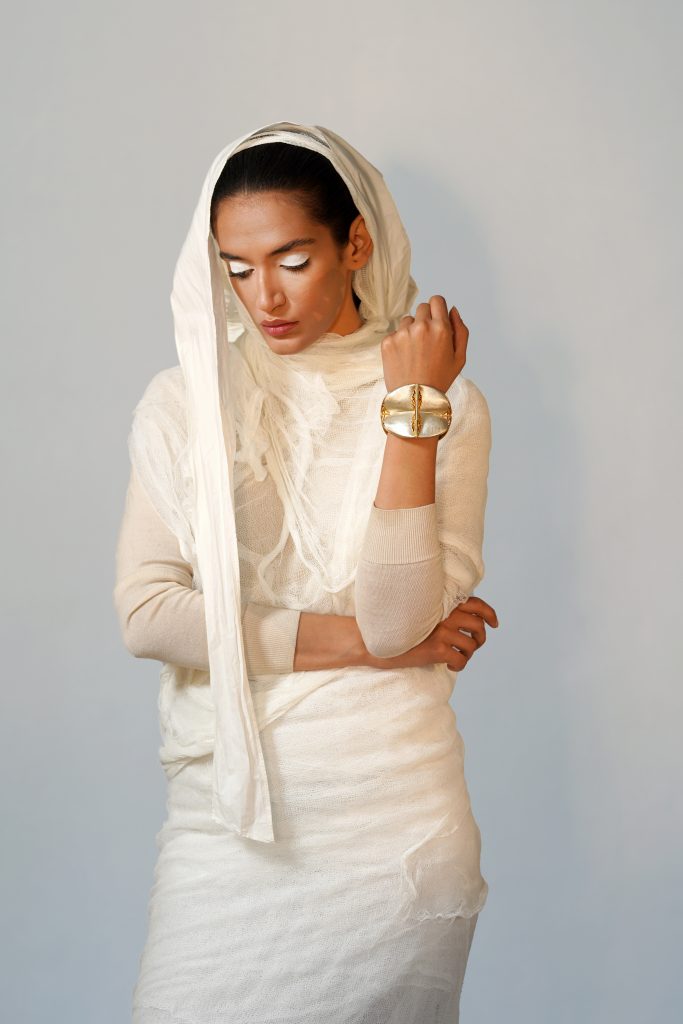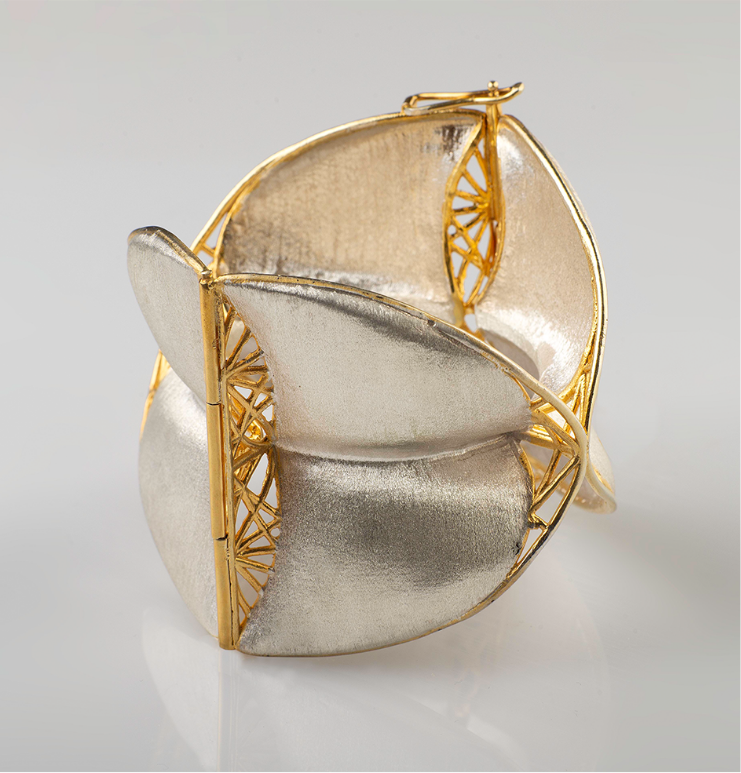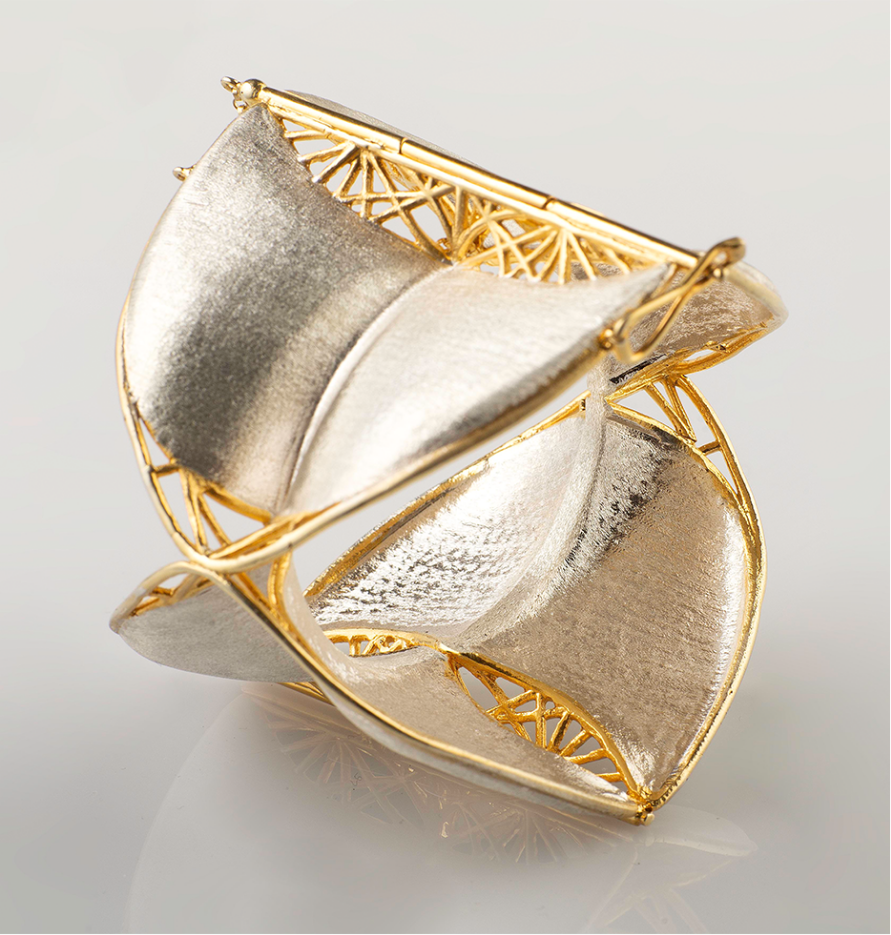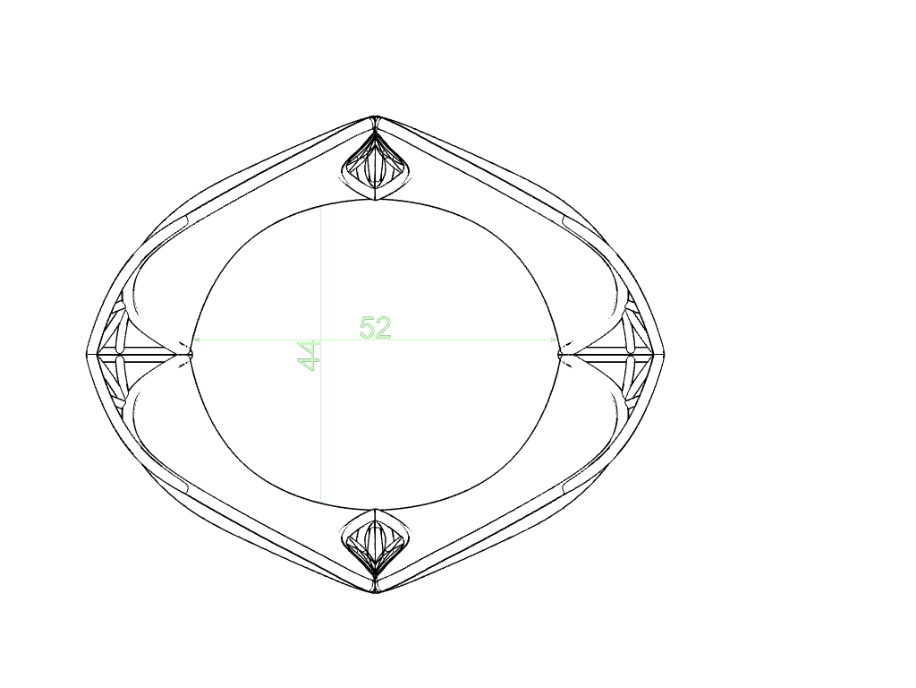In the BodyGeometry collection,Banafsheh Hemmati’s jewelry is not only made to be possessed by the body, but also contradicts to the body. The body pushes them back after a while. Such consideration converts the jewelry into a sculpture, in which the body plays a role, as well. The body acts as a media to represent it. Like the sculpture leg, i.e. a “side work” which either gives or removes meaning to/ from the sculpture, the body may also have the same role when wearing jewelry. In several cases, the jewelry demonstrates certain criteria other than being ergonomic and fitted into the body. The jewelry traditional perception is ornamenting the female body, and this way, generating legitimacy for such body; however, the jewelry exhibited in this collection detaches from such familiar and traditional function. Instead of being fitted into the body, it deliberately highlights itself, and changes the focus from the female body to the jewelry. Therefore, the subject of gaze is not the body, assisted by the jewelry, but the latter itself. This way, a fully contemporary encounter with the jewelry is developed.Taking benefit from geometric designs and patterns in Islamic Art is not a sole quote and embracing. In these works, Islamic geometry has been deconstructed. Such deconstruction has been conducted considering Islamic geometry aesthetics and form, and the artist has tried to borrow a certain part of such geometry and repeat it in more extensive aspects. This component refers to geometry repeatability characteristic; however, distinction between the work of artist and traditional and decorative attitude to Islamic geometry in choosing and selecting is a part of the same.
